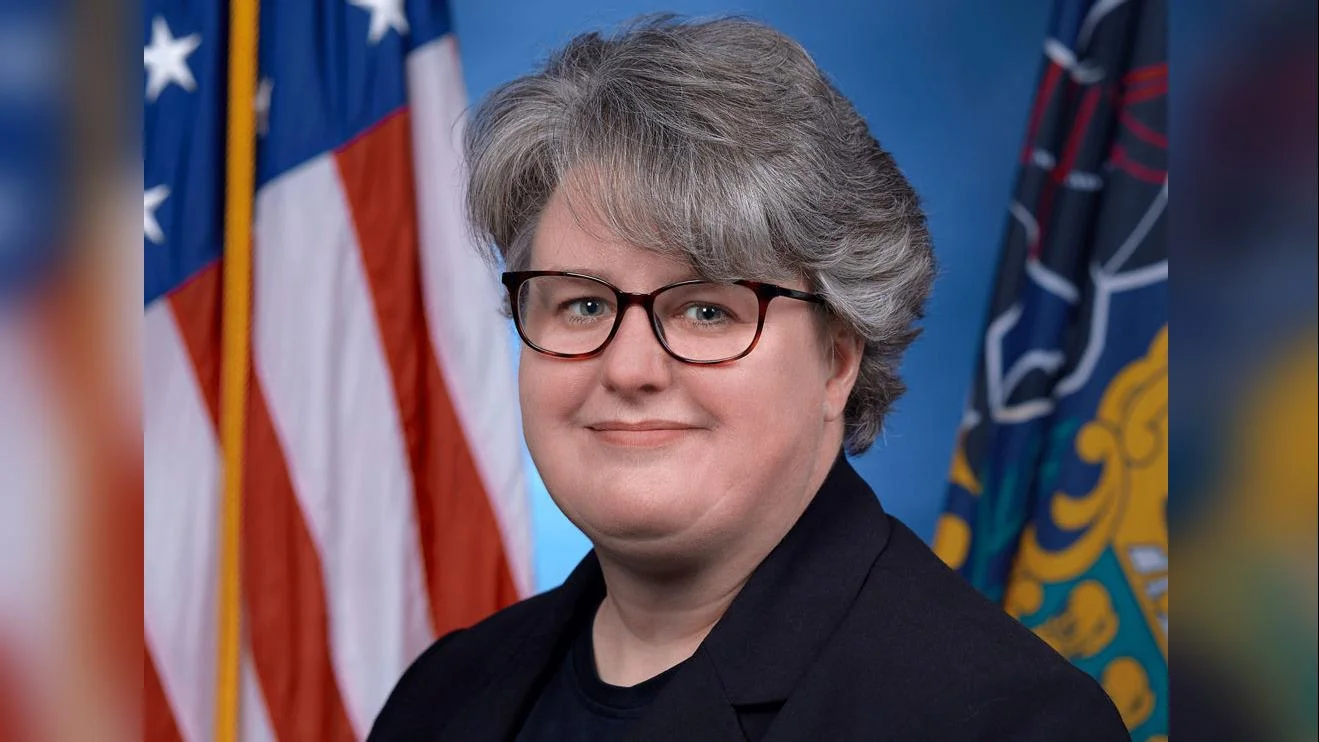
Elizabeth “Betsy” Corcoran, Co-founder and CEO | EdSurge Research
A ninth grade algebra teacher in San Antonio, Texas, April Jones, has decorated her classroom with various posters and banners collected over her ten years of teaching. Among these is a “Hate Has No Home Here” sign that features symbols representing Pride and Transgender Pride flags, as well as a gradient of skin colors. This particular sign became the focus of scrutiny from her school district due to new state laws.
Jones said, “If a kid likes coming to your class or likes chatting with you or seeing you, they’re more likely to learn from you. Trying to do something where kids can come in and they see even one piece of information on a poster, and they go, ‘OK, she gets it,’ or ‘OK, she seems cool, I’m going to sit down and try,’ I think, is always my goal.”
The legislative environment for public school teachers has changed significantly in Texas after the passage of Senate Bill 12 on September 1. The law restricts programs and discussions related to race, ethnicity, gender identity, and sexual orientation in K-12 schools. Administrators asked Jones to remove her sign because it included symbols associated with Pride flags. While Jones initially refused—drawing support at school board meetings and online—the district eventually directed all teachers to cover up Pride symbolism for the 2025-26 school year.
“I did fold the bottom so you can’t see the hearts,” Jones said about modifying her banner. “It does almost feel like a defeat, but with the new law, you just don’t know.”
The law’s ambiguous language leaves much open to interpretation by districts. In Jones’ case, administrators determined that while the words were acceptable as an anti-bullying message, the accompanying symbols were not permitted under current guidance.
Texas educators are also navigating other mandates such as requirements for displaying donated Ten Commandments posters—a policy currently being challenged in court—and broader national trends restricting discussion of certain topics in classrooms across states like Florida and Arkansas. Some states have enacted bans on displays perceived as political; Utah, Idaho and Montana have passed laws restricting certain flags in classrooms.
Madison Markham from PEN America explained: “The bills [aren’t] necessarily saying, ‘No LGBTQ+ flags or Black Lives Matter flags,’ but that’s really implied, especially when you look at what the sponsors of the bills are saying.” She noted that recent legislative changes reflect patterns seen earlier in book censorship efforts.
Markham described how digital resources have also become subject to restrictions similar to those imposed on physical books. Web filtering now affects access to ebooks and databases based on keyword searches designed around terms like “harmful to minors” or “obscene materials,” even though such content was already banned previously.
Texas’ READER Act is one example of how regulation now extends into digital materials provided by vendors for public schools. Earlier this year outside Houston at Lamar Consolidated Independent School District (LCISD), access was temporarily disabled for a lesson about Virginia because its state flag—depicting Virtus with an exposed breast—was flagged under local library policy updates aligned with state standards.
Anne Russey from Texas Freedom to Read Project commented: “[But] we don’t think the Virginia flag qualifies as [sexually explicit material], and I don’t think most people think that it qualifies.”
Research indicates these policies may affect student engagement. A study from FirstBook found correlations between book bans and lower reading engagement during a period when literacy rates are declining nationally. Teachers facing increased restrictions sometimes leave public education altogether or seek employment at charter or private schools instead; however, Rachel Perera from Brookings Institute warns there are fewer legal protections for teachers outside public systems.
“One cannot rely on the same highly regulated standard of information available in the public sector,” Perera said. “Teachers should be a lot more wary of private school systems. The default assumption of trust in the private sector leadership is often not warranted.”
John McDonough experienced job loss after refusing requests at his New Hampshire charter school regarding display of a Pride flag; he reported increased oversight over curriculum content following community complaints about his classroom decor.
“During one of the meetings about my classroom...we had people from the community come in and say that they were positive that I was like a Satanist,” McDonough recalled.
Legal experts highlight ongoing uncertainty for teachers regarding free speech rights within classrooms. Jenna Leventhal at ACLU stated: "Let's say you have a category of speech that you are banning," Leventhal said. "Someone has to decide what fits in that category of speech and what doesn't. And when you give that opportunity to the government, it's ripe for abuse."
Teachers remain responsible for using professional judgment while adapting curricula amid shifting rules limiting instruction on race or gender-related subjects—a development some argue impacts students’ understanding both academically and personally.
In practice this means some educators now approach sensitive topics cautiously; April Jones describes checking whether students’ parents are aware before engaging further on personal matters due to mandatory reporting obligations introduced by SB-12: “Because if not...depending on what you tell me, they’re going to,” she tells students who confide sensitive information.
Maintaining supportive environments remains important among many educators despite external pressures against inclusionary practices or displays; some districts continue DEI initiatives even under threat of losing federal funding while others allow supportive signage contrary to state guidance.
“I’m not teaching politics,” Jones emphasized regarding her classroom displays.“I’m not promoting anything. Choosing to have a rainbow heart or a pin on my lanyard — someone would have to look at that and then complain...that they feel is above me. And that is a choice that they make rather than seeing this [object] and [choosing] to move on.”





 Alerts Sign-up
Alerts Sign-up